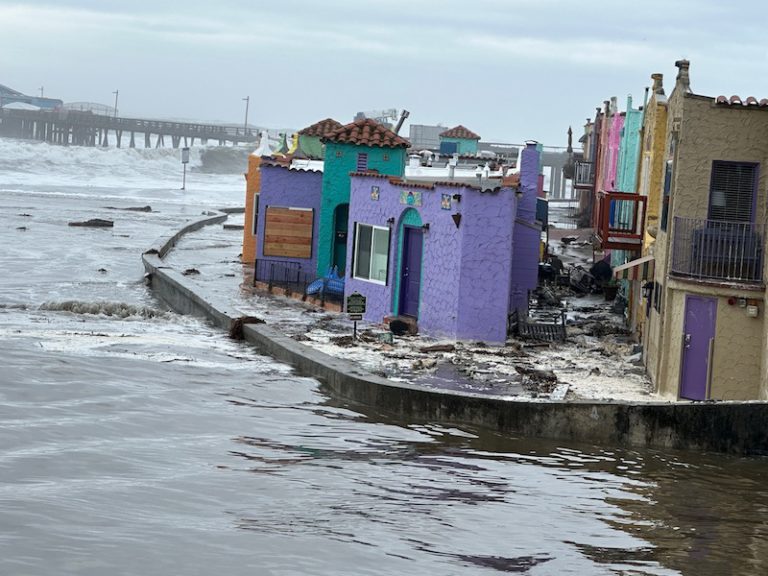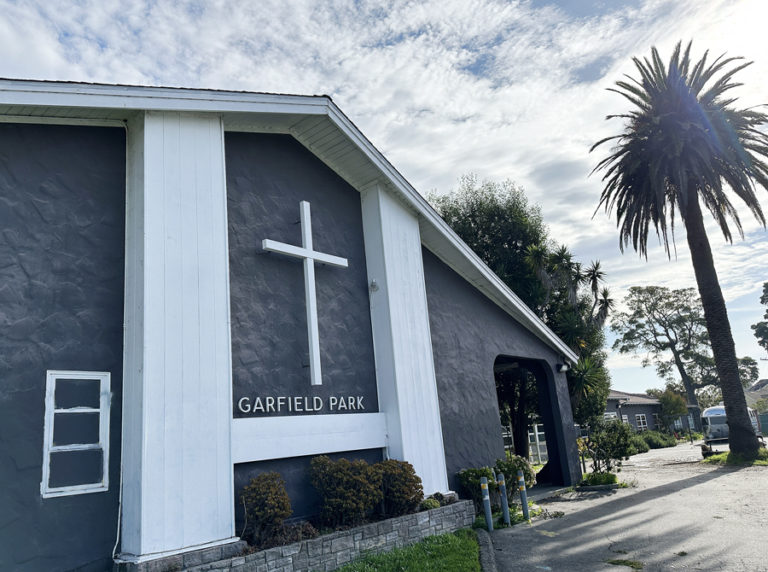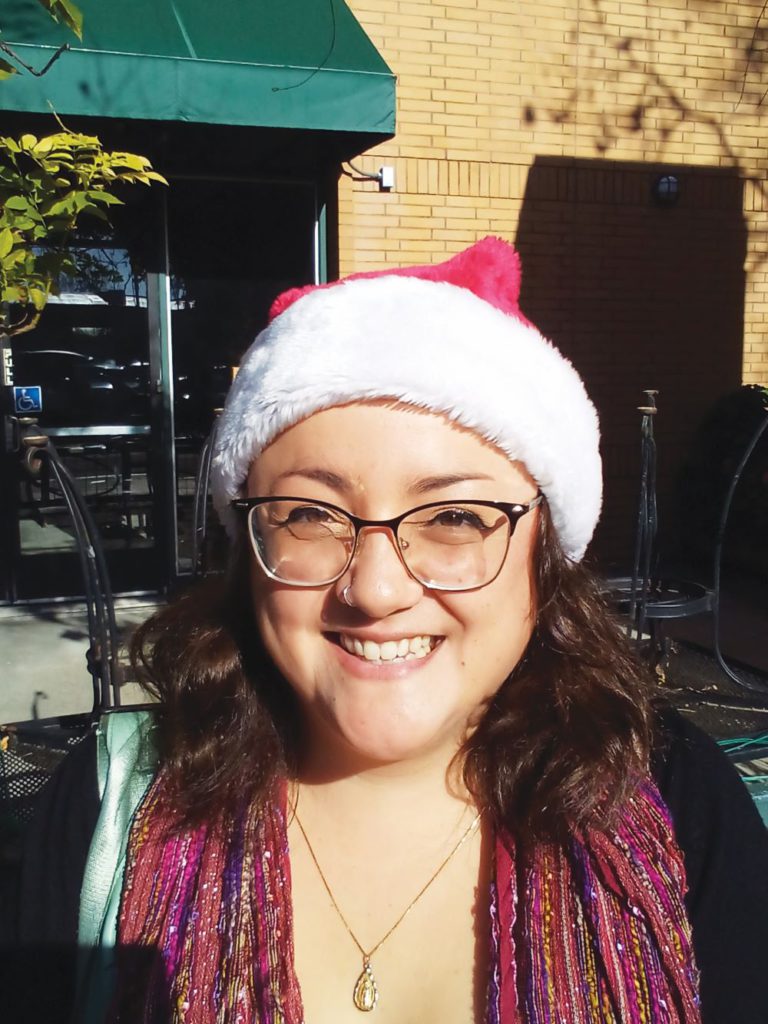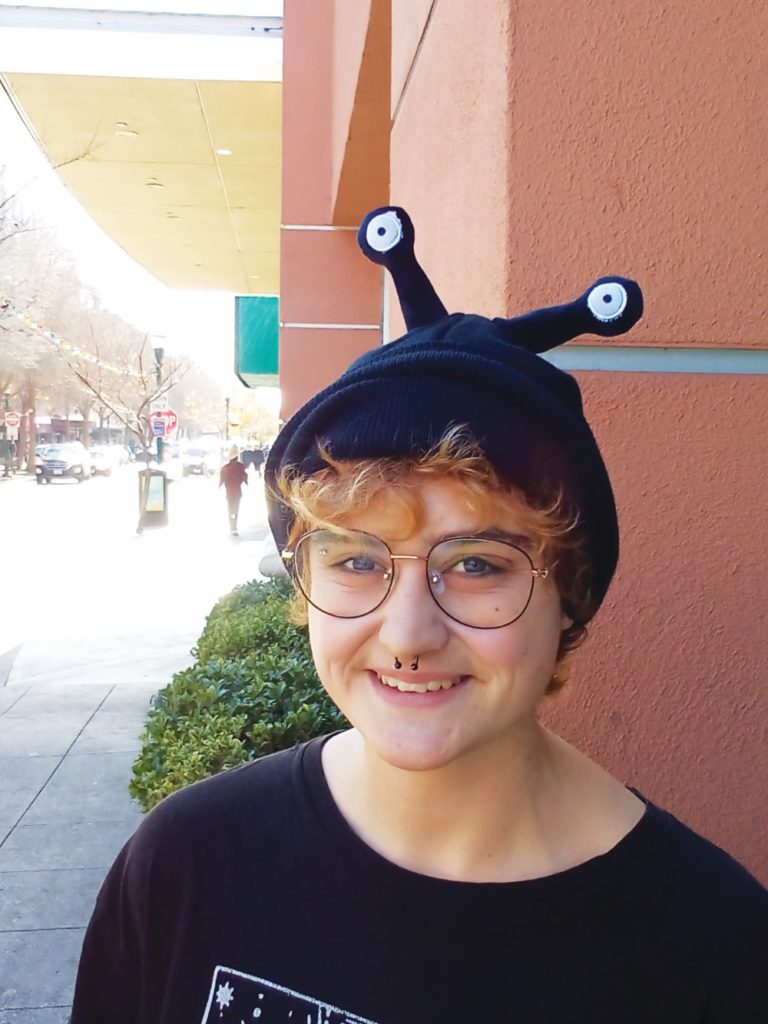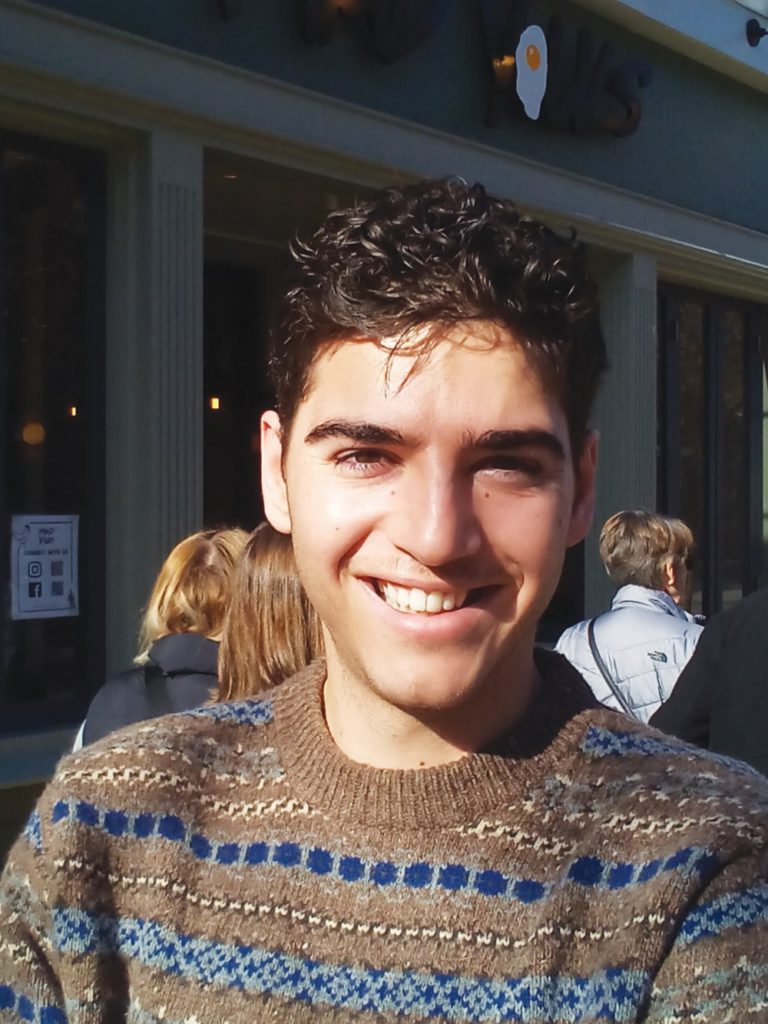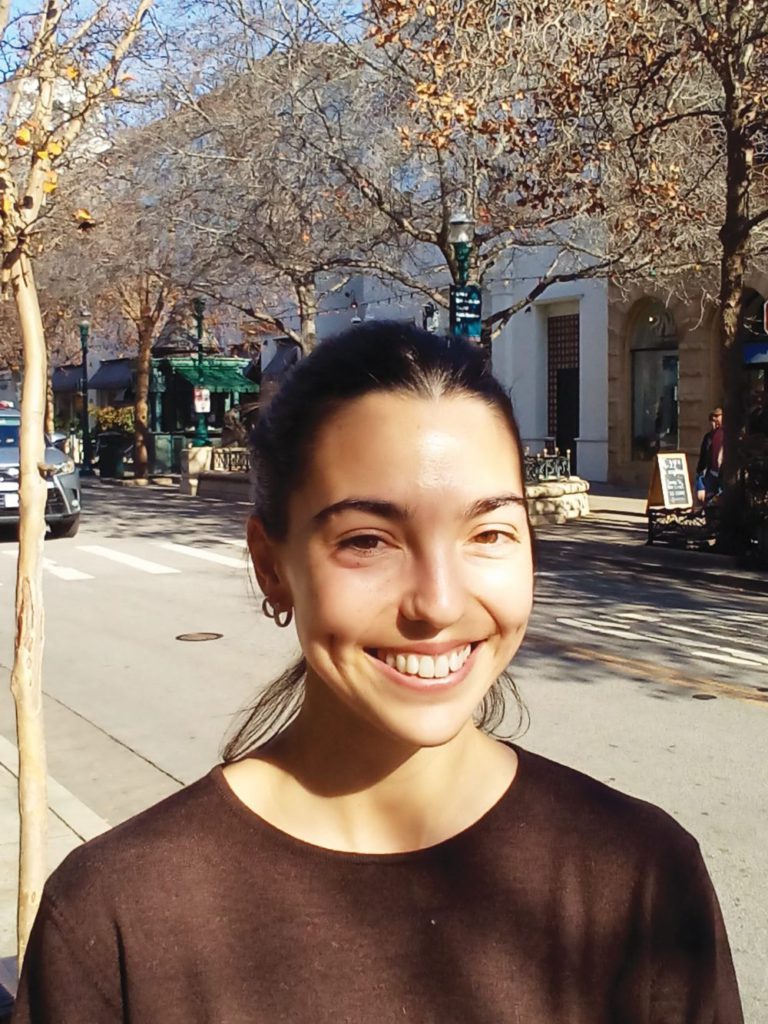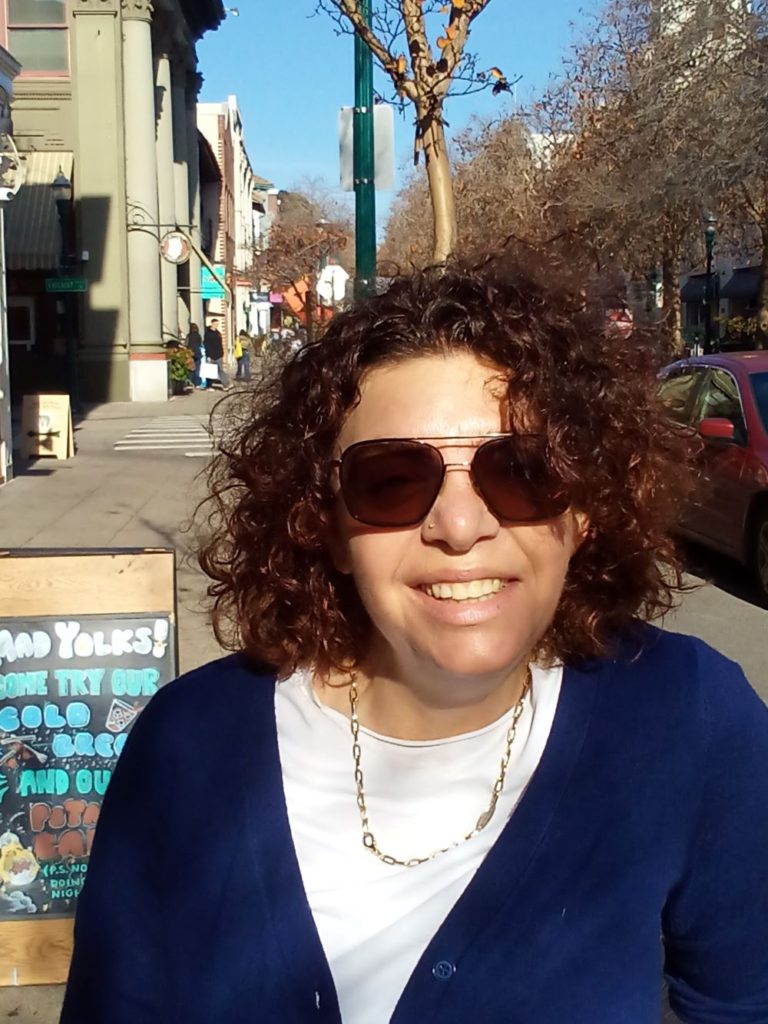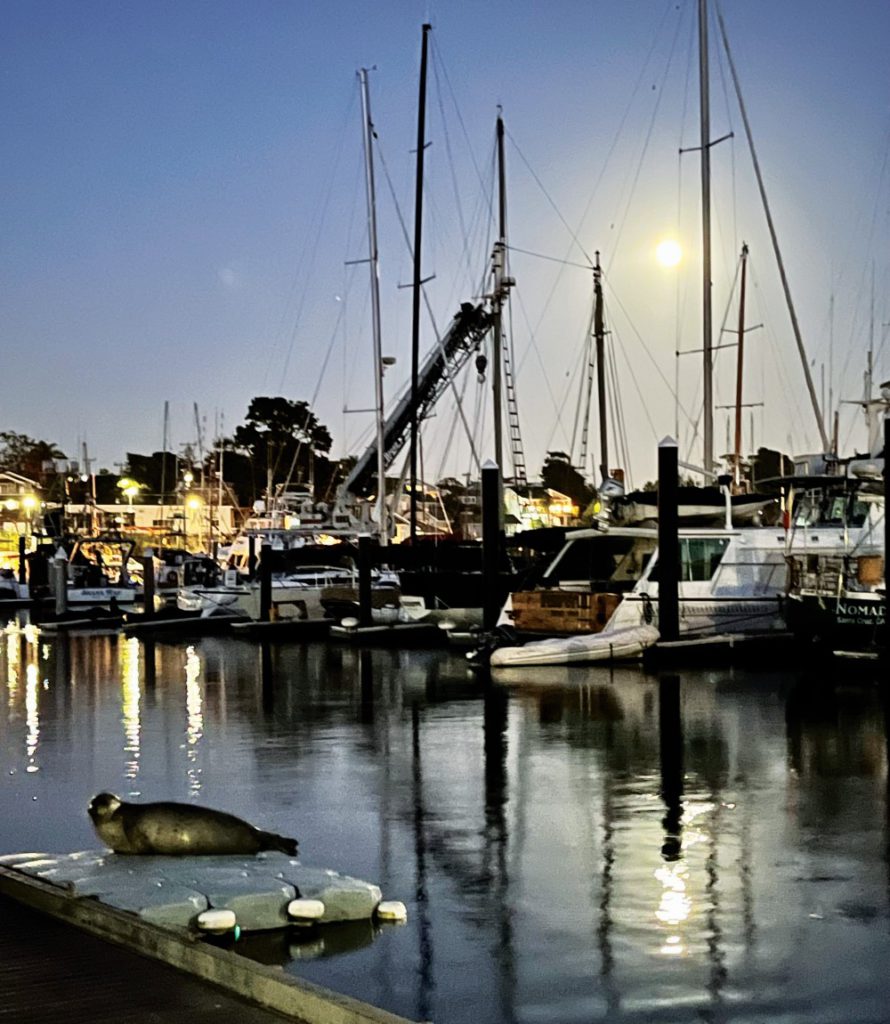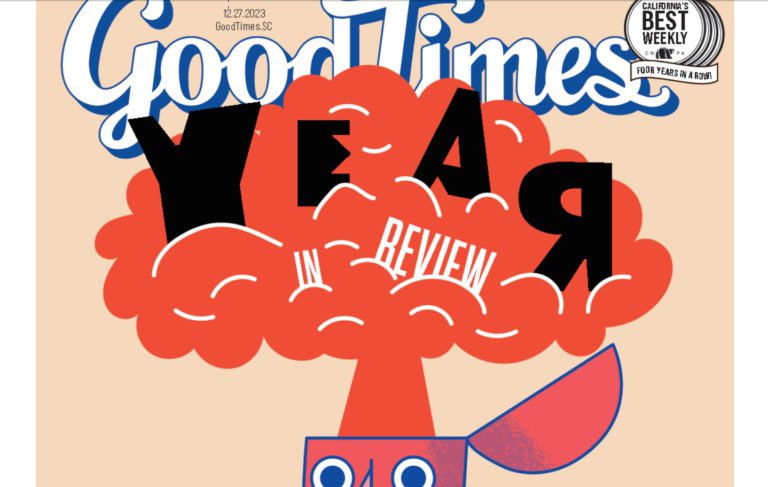When all else fails go with the animal stories. That’s been an age-old fall back for journalists and for YouTube too. Try sliding around there without getting sucked into videos about the monkey living with dogs or the cow who befriends a giraffe or the fox family who shows up to a door to get fed. Oh yeah, and the bears. All of a sudden, they make great pets.
Oops, there went a work day and I can’t even remember what I saw in all that scrolling.
Looking back at 2023, the animals steal the show in Santa Cruz, not just because cuteness wins every time, but because the alternative is dark chilling news of families losing their homes to floods, crime gangs ravaging businesses, 1,800 unhoused people suffering on the streets, fentanyl killings up all over, hideous international wars and a national cult claiming people are too weak and ignorant to handle democracy.
OK. Back to that cute little otter who, after all, wasn’t that cute when she was eating surfboards and scaring swimmers. Cut to the sharks. Oops. Not so cute. And let’s not even start on the cocks or roosters or chickens or whatever they put in the fighting rings.
We asked our writers to come up with some of their memorable news stories of 2023 and you can check out their greatest hits and click bait.
January
[TITLE SEQUENCE]: THE STORMS OF SANTA CRUZ
[The camera starts close-focused on a raindrop and pans out to the gutters of a house full of leaves, a washed out road in the background, and the camera begins to sway and gets caught up in the storm, whipping back and forth.]
[Cast of Characters]: The Ocean— a rabid untamable beast. The Wind— a friend of the ocean’s. Firefighters— sitting snugly in their stations, as visions of filling-reservoirs dance in their heads. President Joe Biden— our hero. The residents of Santa Cruz County— staying dry when they can and venturing out to see what has been destroyed next.
“There goes the Capitola Wharf, portions of West Cliff Drive, and the pier out to the SS Palo Alto,” says our narrator, GoodTimes, a chill local reporter. “Stay safe everyone.”
[Buzzing of a helicopter]: “Hey look, it’s Joe Biden eating Marianne’s Ice Cream!”
February
LOVE IN THE TIME OF THE COOKIE MONSTER
February this year was a time of calm and assessment after our winter’s savage storms slouched into abeyance. A new tempest entered the scene however, when word got out about a guy parading up the Santa Cruz Municipal Wharf in a scruffy Cookie Monster costume, drawing children in for hugs and then whispering morbid sentiments.
The news went postal and a moral panic set in around town. Upon seeing the news, people’s families called to warn about the monster who’d seemingly emerged from the driftwood on the beach. It turned out the gentleman was fleeing the law after stints in San Francisco and back East, and panic turned to rage that the SCPD had not removed the stiff.
AT LEAST THESE ONES ESCAPED COL. SANDERS
Authorities busted a cockfighting ring in Watsonville letting locals know that one of the world’s most ancient sports is still alive.
Some reports trace the sport to chickens from the Harappan culture of the Indus Valley in 2500–2100 BC. It was big in Greece around 500 BC, so much so that gamblers grew addicted (will it inspire a new Vegas casino?)
Two arrests were made in connection with the case: Brett Miller, 58 and Angie Gonzalez, 21.
During the search, about 200 chickens – both roosters and hens – were seized. Detectives also discovered firearms, including assault rifles and high capacity magazines.
WAVING GOODBYE
Hundreds of people gathered at Seacliff State Beach on Feb. 20 to bid a fond farewell to the beloved wharf, which was irreparably damaged by the tidal surge that besieged the county, also causing millions of dollars in damage in Capitola Village.
March
A Hard Rain’s Gonna Fall
This month brought us the heaviest story of the year: the Pajaro flood. After months of the wettest winter in recent years, the levee of the Pajaro River gave way in the late hours of March 10, flooding the town of Pajaro, which traverses Monterey and Santa Cruz counties.
Some 240 single-family homes were damaged in Pajaro as were 42 multiple family units and 81 commercial buildings.
Days turned to weeks as the state government dragged its feet to call for an emergency declaration from President Biden to deploy federal aid to the victims.
Pajaro resident Ernestina Solorio said that if the disaster had happened just 20 miles north in affluent Santa Cruz, the aid might have come quicker.
Especially galling, said Dr. Ann Lopez, who runs the Center for Farmworker Families, was that President Joe Biden and Gov. Gavin Newsom, visited the Capitola Esplanade soon after the disaster and it was largely repaired, while Pajaro sat in limbo.
Local author Jaime Cortez said that “disasters have long tails,” meaning the recovery process extends far beyond the initial disaster. Let’s hope our memory is longer.
April
AND YOU THOUGHT CELEBRATING WEED WAS BAD?
On April 20 when many UCSC students were engaging in the lighthearted annual Porter Meadow festivities celebrating cannabis smoking, some students decided to hold a birthday party for Adolf Hitler.
Other students later complained the University did little to stem the tide of campus antisemitism.
The school’s chancellor Cynthia Larive, however, wrote this in a memo: “Faced with this hatred, I call on our broader community to transform our outrage into uplift and to support our Jewish friends, family, and community members today and each day. Rather than allowing hate to have the last word, we can voice together full-throated support for our Jewish community.”
May
TAKING A BITE AT THE BEACH!
Who did these chompers belong to? Local scientists say they were the molars of the great American Mastodon, mammut americanum, circa 10,000 years ago. Someone who could munch a hillside of chaparral in an afternoon and eat through a gully of woody, fibrous material to satiate an ungodly appetite. Mammoth teeth are quite common, but Mastodon chompers don’t come by the dozen.
“It’s super, super, super important for understanding elephant life in Santa Cruz County during the last Ice Age,” said Paleontologist Wayne Thompson who now believes a herd of Mastodons lived in the area.
The wooden tooth in question was found on Rio Del Mar Beach where homeowners are blocking access to a seaside walkway. In an accident of history, it is probable that the Rio Del Mar Beach Island Homeowners Association has fomented a tremendous discovery in the field of Mastodon Studies. Whereby, the jogger who usually takes the pathway was forced to alter his route and tripped on a protuberance in the sand. Your honor, Troy wasn’t dug up in a day.
SHELTER FROM THE STORM
After 45 days, the shelter at the Santa Cruz County Fairgrounds that was housing hundreds of evacuees from flooded Pajaro closed. It was a positive sign of progress that nevertheless belied a painful truth. Months later, many people were still displaced and out of work.
June
SUPREME DISAPPOINTMENT
In a series of moves one could only expect from a U.S. Supreme Court partially handpicked by former President Donald Trump, SCOTUS struck down student loan forgiveness, dismantled affirmative action and showed support for a baker that refused to make a cake for a gay couple.
President Joe Biden’s $400 billion plan would have helped an estimated 43 million borrowers by forgiving loans and presumably giving young adults a chance at a life without penury. But the 6-3 vote by the conservative majority ended that dream.
A STORY WORTHY OF A MOVIE
In October 2022, two kids were taken from a relative’s Santa Cruz home by jack booted agents in what can only be described as legalized kidnapping, forced into family therapy and then sent to live with their mother, and kept incommunicado from their father and friends back home. They escaped seven months later, and are now telling the harrowing tale of their escape from reunification “therapy.”
THE WRITING ON THE CHALKBOARD
After being summarily fired without explanation three years earlier by the Pajaro Valley Unified School District Board of Trustees, Superintendent Michelle Rodriguez left for Stockton, a $100K+ salary increase. Her move came as the board majority increasingly is leaning conservative. Rodriguez said she was seeking a new challenge, but it’s possible she was escaping a different challenge.
July
SHE OTTER BE IN MOVIES
Otter 841 surfed onto everyone’s radar in July, as she made national headlines for aggressive behavior, including chomping on surfboards. People from other states came into town to see the otter who inspired flyers cautioning surfers and swimmers to stay alert and keep watch for the abnormally interactive otter. When wildlife officials attempted to catch the aggressive otter, people took sides: to this day, free Otter 841 stickers can be spotted on poles. In later news, the world found out that she had a baby! Is that Otter 842?
NO LIVES MATTER TO THIS CREEP
A scooter-riding man was caught on camera defacing a city-permitted Black Lives Matter painting that spreads for a block in front of Santa Cruz City Hall.
That person is believed to have upended a can of blue paint on the yellow-lettered street mural, which was created by a group of local artists in the wake of George Floyd’s death at the hands of Minneapolis police in 2020.
This was the second time the tribute was defaced. Two men were convicted in the first case a year ago. Brandon Bochat and Hagan Warner pleaded no contest and were sentenced to 90 days in the county jail, and ordered to attend diversity and sensitivity training along with paying more than $19,000 in restitution and two years probation
Santa Cruz Police said they are on the verge of a new arrest but are gathering evidence to decide if this is a hate crime.
HEY BARBIE BILLIONAIRE
After years of slumping movie sales with attendance killed by Covid, a doll brought to life grossed $1.4 billion making its director, Greta Gerwig the top grossing female director of all time. The July released movie is the 14th highest grossing film in history and the highest grossing comedy ever.
In keeping with the female theme, Taylor Swift put on the highest grossing concert tour ever, bringing in $1.04 billion with 4.35 million tickets sold across 60 tour dates. Beyonce clocked in at $4.79 million with 2.7 million fans attending across 56 dates in 39 cities.
Swift’s Vegas ticket prices ranged from $35,000 down to $359.
Female performers, like Barbie, ruled the world this summer.
August
SENATE CANDIDATES TRY LOCAL FLAVOR
Before Senator Dianne Feinstein had her last supper in September, Santa Cruz was hit by a melee of campaigning in August that saw Katie Porter, Adam Schiff, and Barbabra Lee hit the local dining scene in a week of events.
On Pacific Avenue Katie picked up a poke bowl at Poke House, “garlic tuna and Scottish salmon,” before heading to Verve for a drink, and then delivering her speech at the Veterans Hall.
Adam kept it simple with a veggie-board and charcuterie at George Ow’s home.
And Barbara hit up Jalisco’s in Watsonville where she proclaimed her opposition to the Iraq War and price increases at taquerias.
HEARD IT FROM A FRIEND
After 12 years on the county’s Board of Supervisors, Zach Friend announced he wouldn’t seek another term for the 2nd District seat, which inexplicably has no term limits.
A whopping five candidates have thrown their hats into the ring: Kim De Serpa, Kristen Brown, Anthony Crane, Bruce Jaffe and David Schwartz. The top two vote-getters will advance to the elimination round…I mean the November election.
September
WHEELS UP
Santa Cruz Skateboards cruz’d into its 50th and celebrated in style. A weekend of festivities culminated with a performance by underground punk act Dinosaur Jr at the Santa Cruz Beach Boardwalk. Politicians and skaters rubbed elbows in a moment that could only happen in Santa Cruz, where a subculture can become part of the town’s identity.
PANETTA SAVES MAN WITH HEIMLICH
Rep. Jimmy Panetta had a busy year: winning “Affordable Housing Champion” and the Community College League’s “Distinguished Alumni Award,” securing funds for the expansion of commercial flying at the Monterey Airport, proposing legislation to give vertical-takeoff aircraft like Joby’s the same tax breaks as traditional planes, and in September saving someone’s life by performing the Heimlich maneuver on a poor fellow during a luncheon in Washington, launching the large piece of pancetta into the press gallery.
At least something is bipartisan. Senator Rand Paul performed a similar maneuver on Senator Joni Ernst at a luncheon.
October
SHARKTOBER
Sharks took spooky to heart in Santa Cruz, turning this month into ‘sharktober.’
A drone captured a great white shark a mere dozen feet off Hidden Beach in Aptos.This is when we learned of a recent study showing sharks were near surfers 97% of the time. That was proven earlier in the month, when huge swells drew out excited surfers, only for many of them needing rescue from the Fire Department’s marine rescue team.
GETTING ON TRACK
The Santa Cruz County Board of Supervisors heard a plan to place a pump track in Felton’s Covered Bridge Park. Supporters said that the facility would give young people an alternative to hanging out on street corners and shooting marbles in alleyways. But the proposal brought out the usual NIMBYs, who worried that parking would become untenable, and that the track would be an eyesore. Surely, they said, a pickleball court or community garden would be a better option for the kiddos. But cooler heads prevailed, and the Supervisors on Dec. 18 unanimously approved the pump track.
November
POT BURGLARS FREE, STORE OWNER ARRESTED
Early morning burglars were stopped by the owner of a local cannabis grow and packaging business, but it was the owner who was arrested.
Derek Hubbard, who owns Decibel Gardens on Encinal Street, arrived at 4:30 am, before police, and crashed his car into one of the getaway cars, firing several gunshots at the eight attempted burglars.
After reviewing security tapes, police arrested Hubbard and charged him with assault with a deadly weapon.
Other cannabis store owners were not happy, claiming that police have been slow in protecting their businesses from a string of robberies.
Police Chief Bernie Escalante said officers arrived in just over three minutes after a 911 call. “If that’s a failure,” he told Lookout Santa Cruz, “I’m not sure I can meet their expectations.”
December
SORRY, OFFICER, I’M NOT DRUNK, I WAS STUDYING FOR MY FINAL
Normally alcohol is prohibited on community college campuses, but Cabrillo College is promoting the vino with a new wine studies degree, teaching students the intricacies of tasting, growing and serving the drink Jesus made from water.
And there are job possibilities: The California wine industry employs 422,000 people and generates $170.5 billion, according to the California Association of Winegrape Growers.
We’re waiting for a degree in cannabis studies.
SPACEBAND IS FASTER THAN BROADBAND
An orange tabby cat named Taters stars in the first video transmitted by laser from deep space, stealing the show as he chases a red laser light.
The 15-second video was beamed to Earth from NASA’s Psyche spacecraft, 19 million miles (30 million kilometers) away. It took less than two minutes for the ultra high-definition video to reach Caltech’s Palomar Observatory, sent at the test system’s maximum rate of 267 megabits per second.
The video was loaded into Psyche’s laser communication experiment before the spacecraft blasted off to a rare metal asteroid in October. The mission team at NASA’s Jet Propulsion Laboratory in Pasadena, California, decided to feature an employee’s 3-year-old playful kitty.
The video was streamed to Earth on Dec. 11. Despite the vast distance, the test relayed the video faster than most broadband internet connections here on Earth, said the project’s Ryan Rogalin.



